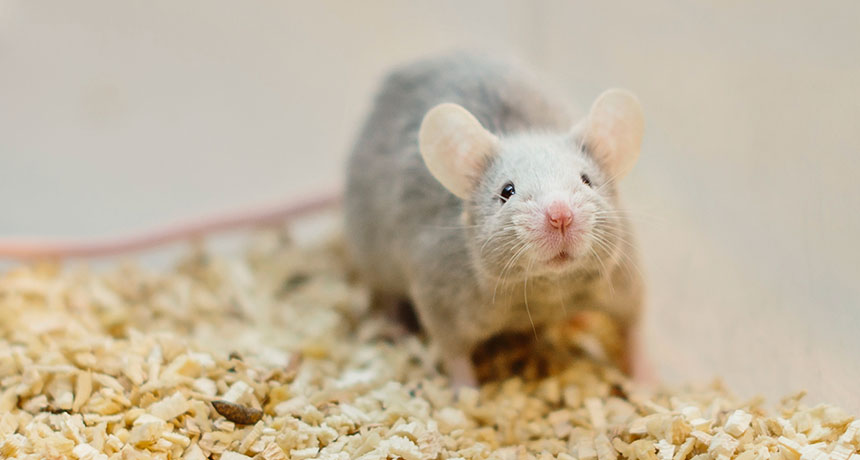Chilly cages may skew disease studies in lab mice
Thermal stress hides uptick in inflammation when rodents fed high-cholesterol diet

NOT COOL The chilly temperatures that many lab mice live in could impact study results.
lculig/istockphoto
- More than 2 years ago
Keeping mice in cold cages hides the effects of diet on metabolic disorders. Warming up those mice might lead to more reliable study results, researchers conclude in a study published online November 5 in Cell Metabolism.
Lab mice living in warmer habitats and fed high-fat and high-cholesterol diets showed more inflammation than they did when fed the same diets in colder homes. In mice engineered to be prone to metabolic disorders, the inflammation sped up the progression of atherosclerosis, a disease that causes hardening of arteries. But the inflammation surprisingly didn’t affect how well cells respond to insulin, a problem for people with obesity and type 2 diabetes.
Although an ideal temperature for mice might be closer to 30 degrees Celsius (86 degrees Fahrenheit), lab mice are typically kept at temperatures between 19° C and 22° C (66° F to 71° F). That temperature range might be OK for fully clothed humans, but it stresses mice, says study coauthor Ajay Chawla, a molecular physiologist at the University of California, San Francisco.
To keep warm, mice move around more and expend more energy than they would at higher, more comfortable temperatures. Heart rate and blood pressure go up, too. And unlike people, who can cope with the stress of being uncomfortably cool — by turning up the heat or putting on more clothes, for example — the mice experience this thermal stress all the time, Chawla notes. “It’s one thing to live in stress and have it dissipate,” he says. “It’s another to live in this kind of stress forever.”
The new results add to the concern that thermal stress affects the results of studies that use mice to model human disease. Earlier studies using mice kept at cooler temperatures could have masked correlations between diet and metabolic disease, and the problem could be broader, Chawla says. “Perhaps we’re not modeling human disease in mice well.”
In the study, adolescent mice were fed a high-fat diet to promote obesity and a high-cholesterol diet to induce atherosclerosis. Some mice were observed under normal, cold lab conditions (22° C) and others in “thermoneutral” conditions (30° C), in which the mice needed to expend minimal extra energy.
Inflammation in fatty tissues and blood vessels increased with temperature, and immune cells responded to this inflammation up to six weeks earlier in the warm mice compared with the colder mice. Similarly, the progression of atherosclerosis, characterized by plaque build-up in the arteries, quickened.
More surprising, though, was that temperature-driven metabolic inflammation didn’t affect insulin tolerance in the mice, a result the researchers didn’t expect since inflamed fat tissue has been linked with insulin resistance before. That suggests that the development of obesity-related insulin resistance may not necessarily be tied to metabolic inflammation, Chawla says.
Temperature doesn’t have a “subtle” affect, says Chawla. Instead, it causes “profound” changes. “To move forward in human disease, we have to pay attention to this one variable,” he says.
Ronald Tompkins, a surgeon and researcher at Massachusetts General Hospital in Boston, agrees that the effects of temperature haven’t been well studied. But he notes that mice may not be good substitutes for modeling diseases in humans for reasons other than temperature (SN: 9/20/14, p. 14). “You have a fundamental difference in species,” Tompkins says, adding that the human-mouse gap might be too wide to draw conclusions to begin with. In the wild, for instance, “you will never find a mouse dying of human atherosclerosis disease,” he says.







